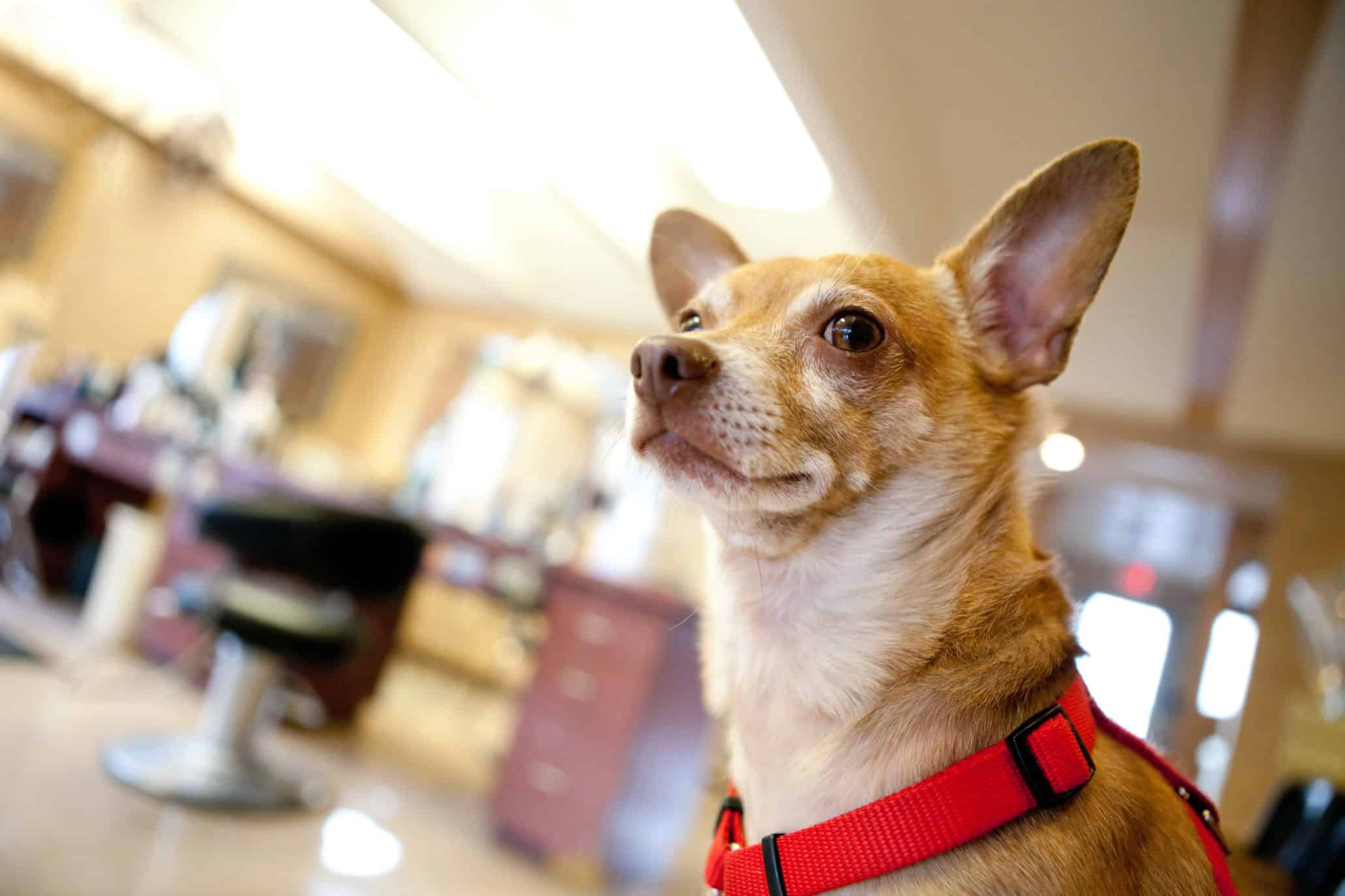How to Bathe your Dog and Control Shedding

Here at K9 University we are getting more requests for grooming services, whether it is a full-service groom or just a bath. In this article, Robyn Michael, K9U groomer, discusses how to bathe your dog and control shedding.
How to Bathe Your Dog
How do you know if your dog needs a bath? Here’s an easy method: put your dog in the car & go for a ride. Take your dog out of the car and get back in yourself. If you smell dog, the dog needs a bath. This can be as often as every day or once a year. What you are smelling is anaerobic digestion by bacteria. You’ve got to kill the bacteria to kill the odor. (This is why Listerine works).
Now you know, why bathing is important, here are simple steps for how to bathe your dog.
Preparing the bath
But don’t just throw your pooch in the tub. First, you really have to prepare.
Step 1) Brush your dog thoroughly before the bath. I suggest a good slicker or rubber curry (see notes at the end of the article). Get all the mats out, otherwise they’ll really tighten up when they get wet and have to be cut out.
Step 2) Get your towels together. You can find good microfiber, lint-free dog towels at any pet store or super store. Warm them in the dryer to help promote evaporation while drying.
Step 3) Dilute the shampoo. I suggest a 16 to 1 ratio of water to shampoo (old dishwashing soap bottles work great for mixing). Not only will this save you money, it will make it much easier to rinse your dog. If you don’t get all of the suds – which contain sodium – rinsed away, your dog will itch like crazy after the bath.
Step 4) Prepare the bath area. I recommend a closed room – mud room, laundry room, or bathroom – with a hose or hose showerhead attachment. Using a cup or bucket to rinse is sub-optimal (how will you rinse the underside?).
Bathing your dog
Don’t make an all day affair out of this. Get the dog in the tub, wet him, massage shampoo into the coat (for those with non-shed ‘hypoallergenic’ or even double coated dogs, I suggest brushing the shampoo through the coat with a slicker brush), rinse, and towel dry.
For most dogs this will take about five minutes. Your long-haired dog will take a few minutes longer. If you have a crate, line the bottom with a warm towel or two for the dog to lay on. To cut down drying time, use a warm hair dryer on low (if you dog will let you).
If this is too much work, that’s what we are here for at K9 University!
Controlling your dog’s shedding
What about shedding? Dogs shed for several reasons. One reason, of course, is genetics and coat type. Dogs shed more when they get more sunlight or if your home is too warm. Dogs also shed when they get excited. You come home and POOF! Hair all over from a dog happy to see you!
Cutting the hair is not the solution
First of all, the dog will still shed, just shorter hair. But more important, you might make the dog shed more. Why? Biophysics and a stress response called Clipper Alopoecia. It’s not the topcoat that is shedding, but the undercoat. When you cut the topcoat, sometimes it doesn’t grow back, and the undercoat increases.
Sometimes it grows back patchy.
I suggest a de-shedding treatment once a month. I use the Furminator brand de-shedding system. The way it works is that the shampoo and conditioner have a specially formulated product with Vitamin E that makes the skin more supple. When the skin is more supple, the hair that is about to shed out will come out easily.
When you ask for a deep conditioner treatment, this is also what I use. It’s a 3-step process and takes longer, but for shedding due to sunlight, rather than situational stress, it works amazingly well, especially if you do it about once a month. And it would be the same price as a haircut.
Care and maintenance
Bottom line, especially for you parents of non-shed dogs: there is up keep. If your dog gets wet — and he will if he goes to daycare — he must be brushed out immediately. If you want to keep over two inches of coat on your dog, he must be bathed and thoroughly brushed out at least every two weeks.
The alternative is to remove the mats with cutting tools or by trying to comb through them, which can be painful for your dog and make him afraid of the very grooming tools you need to do your maintenance. Be diligent and your dog will be much happier, cleaner, and smell a lot better!
Notes on grooming tools
I use three different types of slicker brushers in my work and would be happy to show you which is best and most effective for your dog. I just have to say this: for the most part, the bristle and pin brushes that pet stores sell are generally useless. The Furminator brand can be helpful for some shorthaired dogs, and I also use ‘Coat King’ brand rakes, which you can get online at places like Petedge.com.
Or just stop by K9 University and I’d be happy to give you a catalog so you can easily compare style, brands, and prices! Hope to see you soon!


